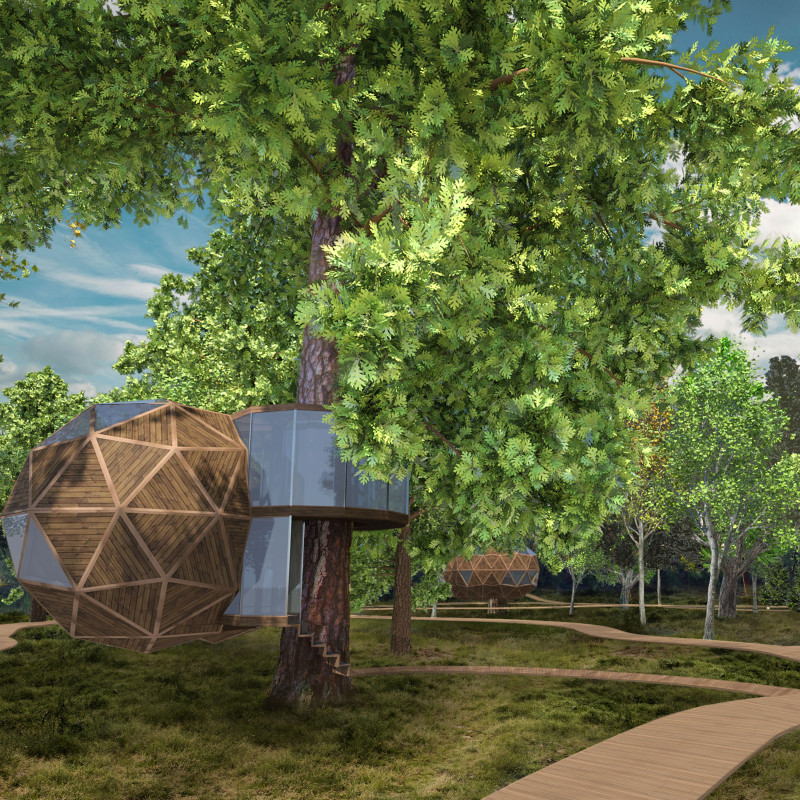5 key facts about this project
The Dome Treehouse is an architectural solution aimed at tackling housing issues in London, a city known for its high property prices that make affordable living difficult for many people. Set within the city’s woodland areas, the design harmonizes residential units with nature. The focus rests on sustainability and ecological care, presenting a way of living that respects and enhances existing green spaces.
Geometric Structure
The design features a geodesic dome structure, which maximizes the usable interior space while offering strength and stability. This shape provides benefits in terms of thermal performance, helping to lower energy use through improved insulation. The rounded form gives a unique visual character that connects well with the surrounding natural environment.
Materiality
The construction of the Dome Treehouse employs cross-laminated timber panels. These panels are both strong and flexible, allowing for careful shaping that fits the dome’s design. This choice of material supports a lightweight construction and encourages the use of renewable resources, making it a more environmentally friendly option.
Spatial Configuration
There are three different layouts in the Dome Treehouse, designed to accommodate individuals, couples, and families. This flexibility allows for units to be combined into larger, multi-storey configurations to suit a variety of living situations. Each layout balances shared spaces with private areas, promoting a sense of community while also providing personal retreat for residents.
Ecological Considerations
Raised pathways connect the treehouses and represent a strong commitment to protecting the local environment. By elevating the units above the ground, the pathways safeguard the habitat and minimize disturbance to wildlife, particularly small animals like hedgehogs. This thoughtful design detail highlights the intention to reduce the ecological impact while still providing access to the living spaces.
The combination of residential units within natural surroundings, alongside supportive structures and carefully chosen materials, illustrates a practical approach to urban housing that not only meets the needs of people but also nurtures the ecosystem around it.



























